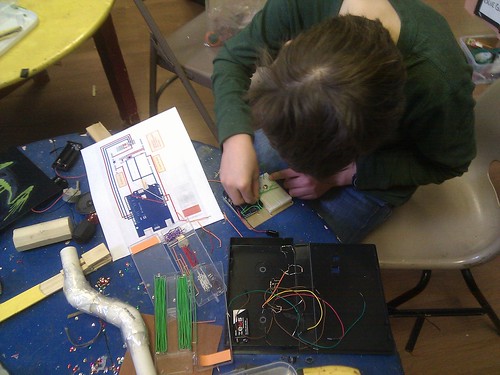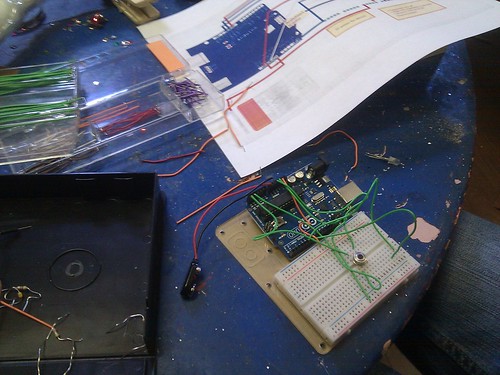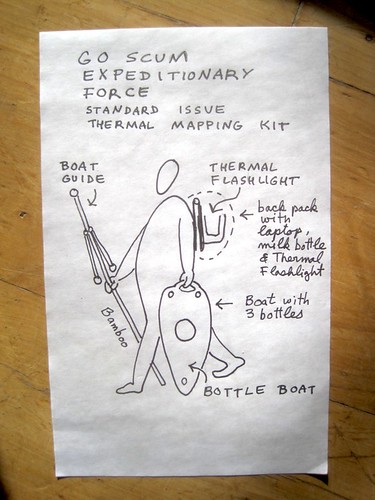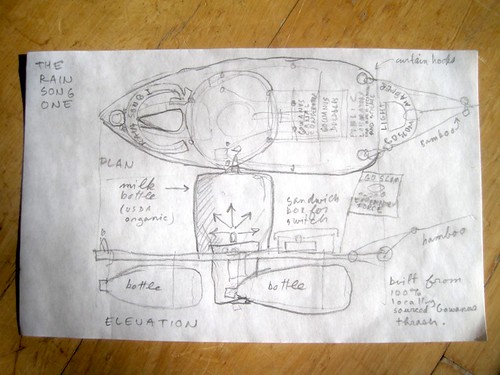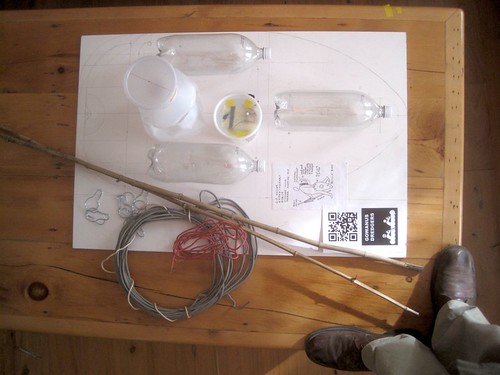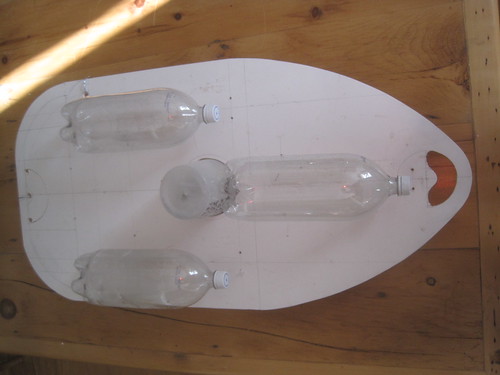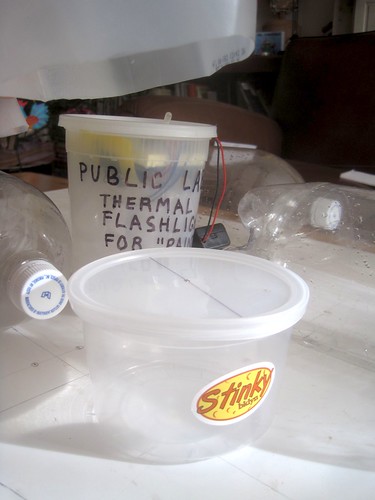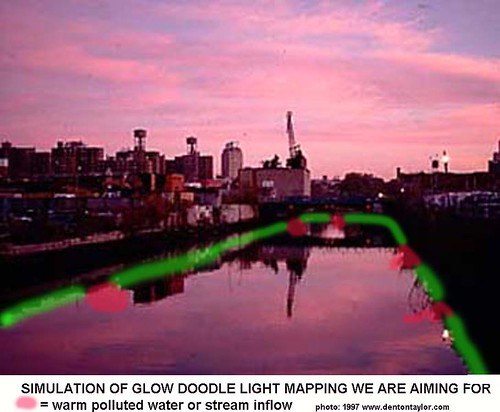Thermal flashlight Blog
RGB +D (red, green, blue, depth) FOSS for Kinect data + video
The RGB +D (red, green, blue, depth) project is an open source toolkit for meshing info from a kinect and a video camera into color point cloud--
I imagine this might be an interesting alternative to Glowdoodle for the thermal flashlight recording-because a 3d spacial visualisation would result. I'm sure there are some grassroots mapping applications too.
Follow related tags:
balloon-mapping thermal-photography kite-mapping 3d

More thermal photography at Parts & Crafts
Having made several thermal flashlights last week, we had a chance today at Parts & Crafts to do some thermal imaging. See the results above, as well as some during-construction shots of Julian's flashlight below:
Follow related tags:
thermal-photography thermal-flashlight parts-and-crafts replication:625
Thermal image experiments at London citizen cyberscience summit 2012
During the London citizen cyberscience summit, there was a workshop about thermal flashlight by Shannon and Sara.
We made a great thermal sensor using an Arduido kit, a circuit board, a thermometer, a RDB LED, resistors, a capacitor, a battery, and lots of wires. I'm not good at electronics, but it just worked. You can make the sensor more sensitive with a different range for the LED colors.
After making a sensor, we captured thermal images using the sensor and a laptop (with a web cam) from glowdoodle.com.
You can see several images inside of Room 121, Chorley Institue, UCL. The room was the darkest one we could find around here.
We tried to capture thermal images with two different ranges for different LED colors. Basically, the blue color means low temperature while the red color means high temperature.
You may recognise David (Zhiwei), Paolo and Seong on the images. Thanks, Shannon and Sara!! It was a great experience and experiment.
Follow related tags:
arduino london thermal-flashlight ucl

Common cathode variant of Thermal Flashlight code
For Thermal Flashlights, if your LED is not turning on, you may have the inverse type, where the shared longer pin actually needs to be connected to negative, not positive (or vice versa).
For LEDs that are common cathode instead of common anode, you have to connect the common (longer) lead to the ground (GND) instead of to 3v, and you have to change the following lines in the code on 138-141:
//set each component to a integer value between 0 and 255
int red=constrain(255-(int)255*r,0,255);
int green=constrain(255-(int)255*g,0,255);
int blue=constrain(255-(int)255*b,0,255);
Basically, I made it scale from 255-0 instead of 0-255; formerly, these lines were:
//set each component to a integer value between 0 and 255
int red=constrain((int)255*r,0,255);
int green=constrain((int)255*g,0,255);
int blue=constrain((int)255*b,0,255);
A complete alternate version is here:
Follow related tags:
thermal-photography thermal-flashlight led response:625

Recap on a Thermal Flashlight Workshop from 12/18/2011
On Sunday December 18, 2011, three eager workshop attendees and one workshop sansei (Jeffrey Warren) created 3 Thermal Flashlights based on the circuit design "Circuit diagram for simple thermal flashlight", designed by the sensei himself.
After about two hours of fiddling with capacitors, resistors, bread boards, LEDs, Arduinos, batteries, and various wires, we had three new prototypes up and running. To protect our Thermal Flashlights and help prevent the LED from being exposed directly to the camera (causes streaks of light when using a program like Glow Doodle to capture exposures), we carved out holes in our VHS cassette cases and placed our Thermal Flashlights inside of the casing.
After pointing our Thermal Flashlight at a few objects to confirm that the units were working, we decided to modify the default temperature range so we could take them outside in the 25 °F weather. I was impressed at how well the thermal flashlights worked outside in the cold. While the photo gives you a general idea of the temperatures the thermal flashlight was showing us, I don't think the photo really does the thermal flashlight the justice it deserves.
Follow related tags:
somerville-massachusetts thermal-photography boston meetup
GO SCUM update
GO SCUM (Gowanus Superfund Contaminated Underwater Mapping) update:
I'm building a Gowanus Canal "bottle boat" for the thermal flashlight so I can take it out for some test runs over the next weekends.
Follow related tags:
new-york-city gowanus gowanus-canal thermal-flashlight
